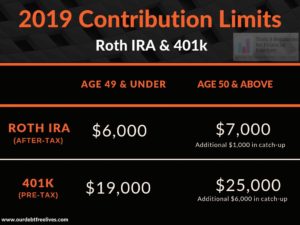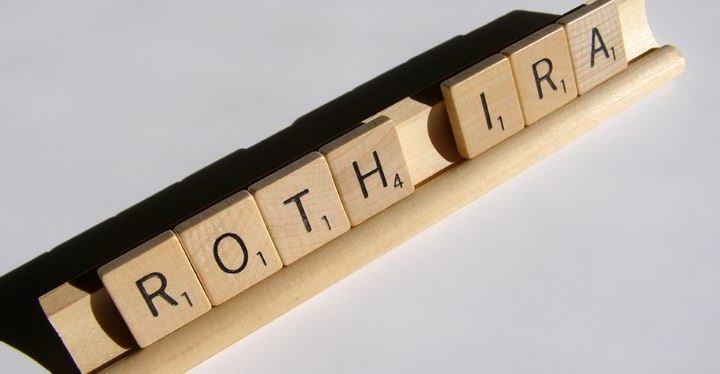Even if your employer doesn’t offer a 401k program, you can still plan for retirement through other savings options. Like many industries, the financial environment continues to grow and expand its products.
Keep in mind there’s really no reason to feel you’re the only one without such benefits. In a recent study from CNBC, only half of all U.S. workers were employed at a business or company offering a sponsored retirement plan.
So, in the spirit of looking at the glass half full, consider this an opportunity to take control of your finances and become money savvy at the same time.
Know Your Savings Options
There are a few common savings plans to explore if you’re an independent saver. They all share the benefit of being available to consumers who find they’ll be “going it alone.”
A Traditional IRA:
An IRA is an Individual Retirement Account which acts as an individual’s savings account and also offers tax breaks. Contribute the maximum amount of $6,000 per year and deduct money when you file your taxes. You only pay taxes on your contributed income when you use the IRA funds.
A Roth IRA:
A Roth IRA is another savings program available to individuals. The key difference between a Roth and traditional IRA is you postpone your tax savings with a Roth until after you retire and begin utilizing those funds.
What is attractive to many people is all money from your Roth IRA savings is free and clear.
A Basic Savings Account:
Yes, we all remember these from our earliest days of depositing extra money from babysitting or yard chores. Despite traditionally low interest rate benefits, there is the joy of seeing small amounts of money accrue and the relief of knowing you don’t have to tap into your other accounts, such as your IRA, if you encounter a financial emergency.
A basic savings account is also one of the best ways to get into the savings habit, since there’s never a minimum amount of money required to deposit.
Is it Best to Invest?
We see so many ads and commercials about how easy it is for any individual to invest and trade in the stock market, but since this is your money we’re talking about, we encourage a little bit of research.
Buying Stocks:
For close to 100 years, stocks have returned almost 10% on the investment dollar. Many individuals enjoy the process of seeing how their decisions play out and there is always guidance (not necessarily on which stocks to choose), but when it comes to making decisions which fit your financial personality.
However, this is a “long game” we’re talking about. Much like going to a casino, don’t spend if you can’t afford to lose. If you’re looking to get rich in a couple of years, the stock market might not be the smartest choice.
Invest in the Markets:
The “markets” go beyond the stock market. For more conservative investors or those not interested in the dramatics of the stock market, tax-managed mutual funds also offer an opportunity to sock away some cash.
A tax-managed mutual fund produces gains as soon as you sell. You do pay tax on the money, but you can also sell the fund at a time most financially beneficial to you.
Real Estate:
Due to the economy, the good news is there are still many properties being sold below market value, so it may be tempting to buy a property or two as rental units. Read about How to invest in real estate for beginners.
However, if people are paying you to live in your investment, it means you’re the landlord and absorb all the associated responsibility. If you’re very handy or can either pay or barter for a “handyman,” being a landlord can be a beneficial investment. Plus, there’s always the opportunity to buy a multi-family unit and live in one unit while collecting income and equity at the same time.
Work is a Four-Letter Word
You’re young and ambitious. You’re even well-versed in regards to the state of the economy and how the landscape of work is changing. Of course you’ll do everything you can to stash away money for retirement.
But the person you are today may not be the employee you are in a few years. It’s estimated 91 percent of Millennials (born between 1977 and 1997) may have as many as 20 jobs in their lifetime. Meanwhile, the Baby Boomer generation (born between 1946 and 1964) can expect, on average, 7 careers in a lifetime.
So let’s agree for now that the best real life benefits of a good job are the experience it provides and the money it puts in your pocket. If you see a pattern of taking jobs you enjoy over the sole financial gain, then maybe work isn’t something you grow to dislike. Here are two questions to ask in regards to prolonging your work life:
Do I Need to Work Longer?
How you answer this question will depend on your overall work history, savings contributions, etc. One statistic which may make the idea more attractive is five more years working full-time may allow you to contribute an additional $30,000 into a Roth IRA.
Will I Need to Work Full-Time?
As you progress through your early-to-mid working years, you may already see the option of working part-time – maybe you have skills and experiences allowing you to work from home.
Or perhaps you’ve experienced the benefits of “simple living” and want to spend more quality time with your loved ones. This mindset can also include living in a smaller house or taking on a job with a shorter commute and/or more flexible hours.
Being proactive and independent about your financial future is a way to craft how your retirement years will look. Plus, in the future (even if you do land a job with retirement benefits), you‘ll understand the perks may not last forever.
It’s always easy to benefit from a company-sponsored 401k program. However, there really isn’t any excuse to delay your own savings strategy. Being proactive will allow you to fully reap the benefits of your working years.







 If saving a lot of money on taxes sounds like a good idea to you, then a Roth IRA is going to serve you well. Picture yourself with a healthy Roth IRA account in retirement. Now see yourself taking money from that account each month to cover your living expenses, securing lower life insurance rates, and what ever else you need. Now see yourself not paying any tax on those withdrawals. Nice, right?
If saving a lot of money on taxes sounds like a good idea to you, then a Roth IRA is going to serve you well. Picture yourself with a healthy Roth IRA account in retirement. Now see yourself taking money from that account each month to cover your living expenses, securing lower life insurance rates, and what ever else you need. Now see yourself not paying any tax on those withdrawals. Nice, right?